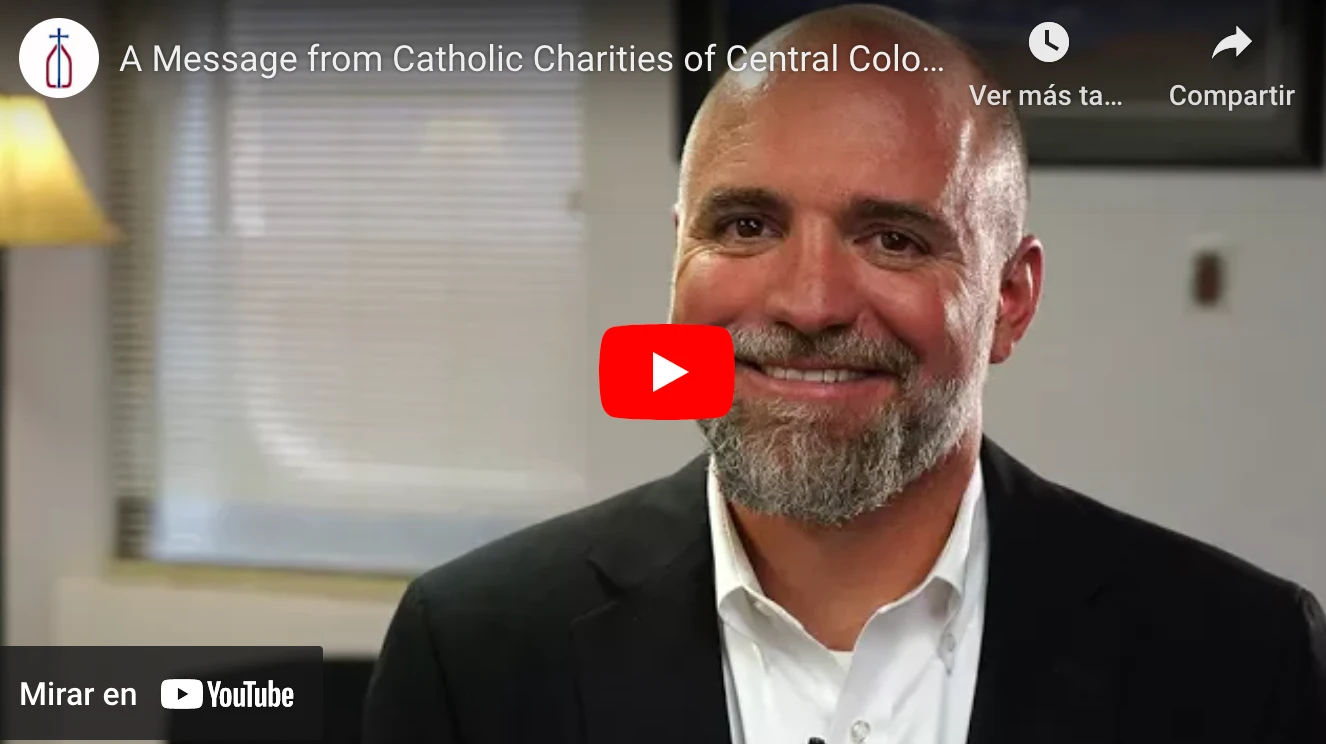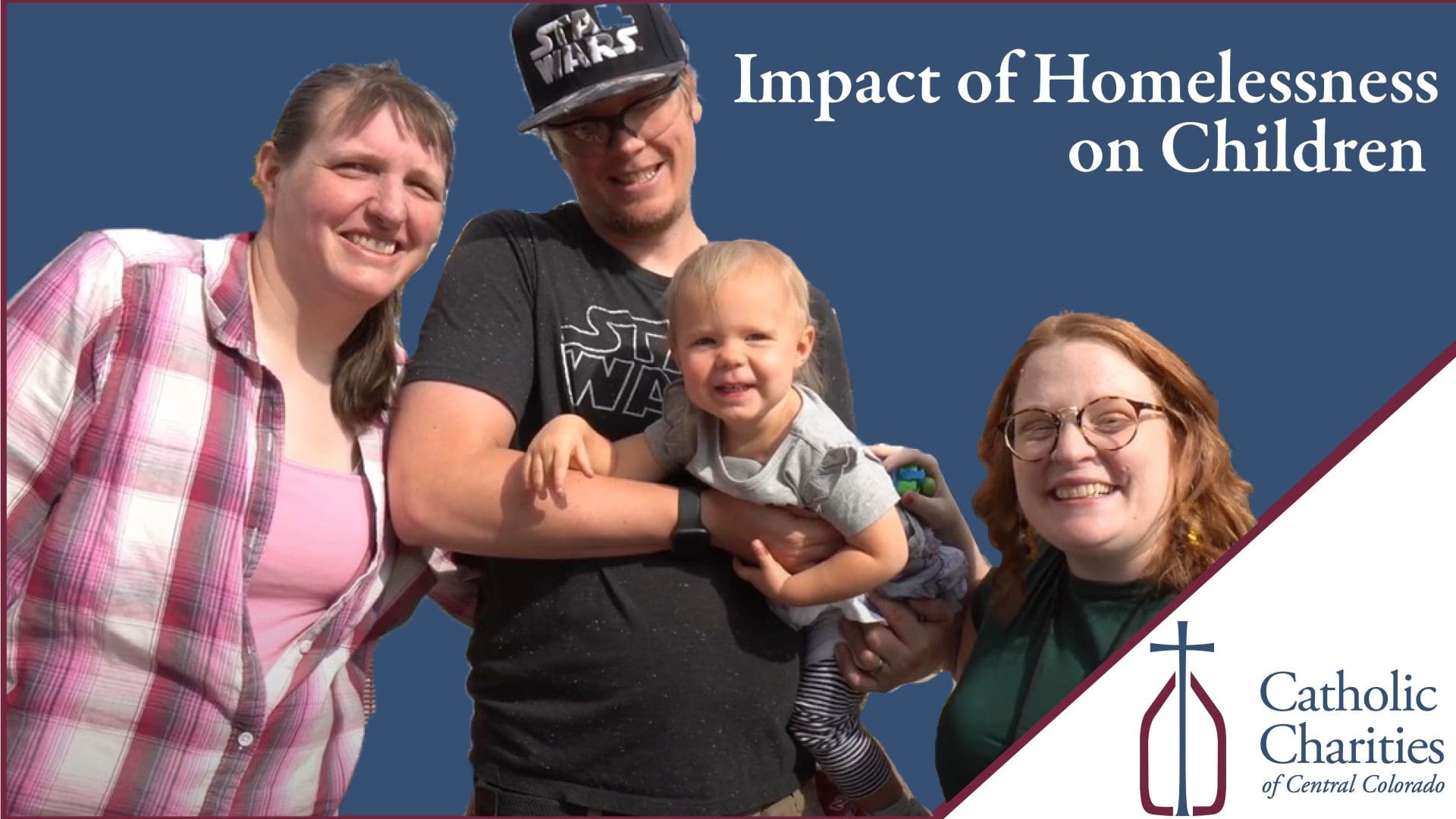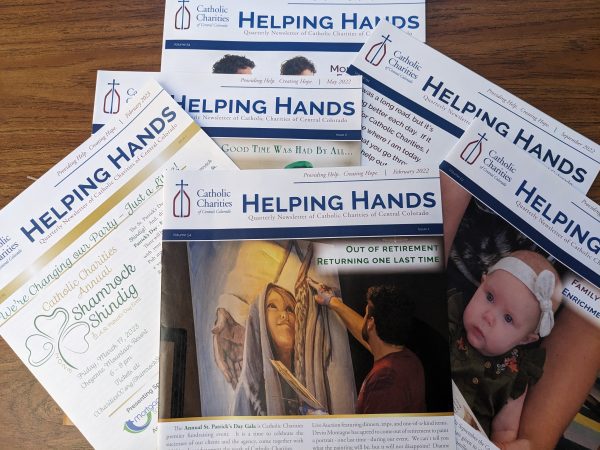
By Rochelle Schlortt/SPECIAL TO THE HERALD
This article is reprinted from the Colorado Catholic Herald – June 1, 2018 edition.
Pictured are: The old Marian House Soup Kitchen from 1985 – 2005; Construction of the site of the new Marian House; The New Marian House opened in 2008.
Some of the people who come to Catholic Charities Marian House need a meal to live. Others need a meal to survive — directing food dollars saved to rent or other necessities to remain in their homes. It has been that way from the beginning when in 1970, Steve Handen began feeding people who were hungry out of his own home. Thirteen meals were served that first day.
As those in need heard about this service, the numbers grew, requiring more space and volunteers. The soup kitchen was housed in two church basements — Our Lady of Guadalupe Church and First Baptist Church — before St. Mary’s Cathedral welcomed the program to the Marian House in 1985. The Marian House was a Victorian-style home that had once served as a convent, located at 14 W. Bijou Street. The front of the building housed St. Mary’s Seniors Program, and the back became the soup kitchen.
Originally, there was some trepidation about the seniors’ program and the soup kitchen occupying the same space, Handen said, but the seniors became some of the soup kitchen’s most dedicated volunteers.
“Those people really stepped out of their comfort zone,” Handen said. “They were moral supporters and sometimes financial supporters.”
Over the next decade or so, the services offered by the soup kitchen continued to grow.
“We never had any paid staff; it was all volunteer,” Handen said. “It got to be an administrative challenge.”
In June 1994, Handen asked the leadership at Catholic Charities to consider taking over Marian House operations. MaryAnn Stadjuhar, the executive assistant, was tasked with determining the best way to run the soup kitchen as a program of Catholic Charities.
“I began interviewing current volunteers and clients, community leaders, and members of the Bijou Community to determine what was working well, what improvements were needed, and cost implications for soup kitchen operations. What I didn’t realize at the time was I was writing my new job description,” said Stadjuhar.
After securing some funds from the City of Colorado Springs and the United Way, and with Bishop Hanifen’s and the Board of Directors’ approval, Catholic Charities officially took control of Marian House in November 1994, with Stadjuhar in the role of the first soup kitchen director. She was the only paid staff member, relying on volunteers and food donors to operate the kitchen.
The soup kitchen, then and now, could not operate without the thousands of volunteers who contribute their time, talent, and treasure to the mission. In 1999, Frank Mora took on the role of Volunteer Manager, juggling the hundreds of volunteers needed to staff the kitchen. Frank once said, “We’re not just feeding people; we’re filling them with hope.” Today’s Volunteer Manager, Doug Rouse, uses technology to manage the thousands of people who volunteer annually. Last year volunteers donated over 90,000 volunteer hours at a value of over $2.5 million.
Preparing meals at the old Marian House was difficult. The small kitchen, common for homes built during that period, could reach temperatures in excess of 100 degrees in the summer. Another room served as the dish room, where the commercial-grade dishwasher was located, along with a sink for volunteers to hand wash dishes. The dining room was an “L” shape that could seat about 75 people at a time. There was a family dining room down the hall as well as rooms for food storage and a small chapel that was used for memorial services. Freezers and refrigerators lined the halls to accommodate the food necessary to deliver the daily meal.
In 1995, the Marian House caught on fire, destroying a part of the serving area of the building. During reconstruction, bathrooms and shower facilities were expanded to meet increasing needs. Catholic Charities expanded to the second floor of the Victorian building where clients could meet with case managers, the clothing closet took up multiple rooms for women’s and men’s clothing, a shoe room, and more. Many of the rooms were converted to offices for staff and partner agencies.
By 1996, Marian House services included the meal program; a five-day-a-week medical clinic administered by SET of Colorado Springs; and a drop-in center that operated two days a week where clients could rest, shower, get a haircut, socialize and play games, attend meetings of Alcoholics Anonymous, or shop for clothes in the clothing closet. Over the years, case management, emergency services such as food boxes, identification and referral services, counseling, community outreach, and a vibrant jobs program would be added.
In 2001, after serving as soup kitchen director for seven years and laying the groundwork for what would eventually become the Hanifen Center at Marian House, Stadjuhar retired. At that time, Frank Crossen took over as director for two years, then Tom Corsentino was hired as the soup kitchen director until he retired in 2007. It was during this time that the Catholic Charities Board of Directors began plans for a new Marian House. The Victorian home was showing extensive wear, and the bunker-style building at the back was too small to accommodate the growth the organization was experiencing.
In 2005, after about $4 million was raised, a ground-breaking ceremony was held, and construction on Phase I of the Capital Campaign — a new soup kitchen — began. Paul Konecny was hired as the soup kitchen director and orchestrated the move to the new facility without missing a serving day.
The new Marian House Soup Kitchen opened in June 2008 with a community-wide celebration where pancakes were served to almost 600 people who attended the ribbon-cutting ceremony. Bishop Sheridan, in his address that day, said, “This is my proudest day as Bishop of the Diocese of Colorado Springs.”
In December 2014, the Marian House experienced a fire in the basement when a dryer unit combusted during the night, causing smoke and water damage throughout the facility. The staff quickly jumped into action, making sack lunches for clients so no one would go without a meal.
In 2015, Jim Benavidez became the new Soup Kitchen Director when Konecny retired. Today, Benavidez — along with three operations managers: Pat Gallob, Theo Reiter, and David Allee — oversees the preparation of the daily meal, the delivery of hundreds of tons of donated food annually, and the maintenance of the facility.
In May 2018, the last Capital Campaign bond payment was made, leaving the Marian House Complex debt-free — almost ten years to the day after its opening. The new Marian House has been all that was dreamed of: a soup kitchen serving anyone in need; a commercial-grade kitchen allowing volunteers to prepare meals in comfort; a larger dining room so more people can be served at one time; and a new addition — the Hanifen Center at Marian House — to allow Catholic Charities to expand stability services to meet the ever-growing and changing needs in the Colorado Springs community.
Since taking on the challenge of running the soup kitchen, over 4.2 million meals have been served with the support of thousands of volunteers and donated millions of volunteer hours. The Marian House is truly a community-wide ministry.
Rochelle Schlortt is the Chief Communications Officer for Catholic Charities.




